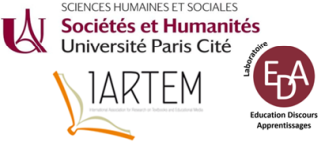Kevin Péloquin, Université Bishop's and Université du Québec en Outaouais, CRIFPE
Amélie Cambron-Prémont, Collège Montmorency
David Lefrançois, Université du Québec en Outaouais, CRIFPE
Marc-André Éthier, Université de Montréal, CRIFPE
Catherine Malbœuf-Hurtubise, Université Bishop's
Since 2017, high school students in Québec have been required to take a financial education (FE) course in the social studies learning area. This covers financial themes relevant to adolescents: consumption of goods and services, entering the labor market, and pursuing post-secondary education. The FE program is a modest 30 pages long, and only 50 hours are devoted to teaching it. This course is perceived by teachers as a difficult subject to tackle in the classroom, not only because of their frequent lack of training (FE content is rarely covered in pre-service and in-service training in the teaching of social studies), but also because it is not based on an explicit, familiar and isolatable reference discipline, as is the case with the teaching of history or geography (Björklund et al., 2022).
Nonetheless, to find ways to address financial issues, teachers can draw on instructional materials. However, the tasks that textbooks and workbooks suggest to students are less about taking a stand and more about finding information (Lefrançois et al., 2023). Financial issues are individual or domestic, never social, or political (Lefrançois et al., 2023). In fact, FE aims to make individuals responsible for their financial situation by focusing on the transfer of knowledge about financial concepts and products, as well as the adoption of attitudes and behaviors consistent with established standards of good financial health (Björklund et al., 2022). So how can the content of the Québec FE program contribute to the study of controversial financial issues and as an opportunity to develop the critical thinking skills of (future) citizens? What role can pedagogical resources in high school classrooms play in achieving this citizenship goal? How can the issue of gender inequalities serve as an example? These are some of the questions that this paper seeks to answer.
Indeed, we analyzed the Québec FE program and the teaching materials – especially the learning workbooks – used to teach it. Using IRaMuTeQ software, we produced a word cloud from the FE program to highlight the most important keywords in the program. With regard to the issue of gender inequalities, we did not analyze all the tasks included in the pedagogical resources associated with the instructional materials used in Québec classrooms. We did, however, examine those proposed in the chapter summaries of four learning workbooks offered by the main publishers of instructional materials. Contrary to the scientific FE literature, which has discussed them extensively (Lind et al., 2020; Tinghög et al., 2021), we observed the absence of content and deliberation on financial issues related to gender inequalities in these documents, but the concepts explored there (including pay equity) could provide opportunities to address such issues, as these concepts go beyond the dominant reductionism that divides FE into four operations: budgeting, saving, investing, and borrowing (Remund, 2010).
Finally, when it comes to learning to reflect and investigate, learning to think critically, and finding solutions to problems posed by students (with the help of teachers) (Éthier et al., 2021), pedagogical resources produced by publishers are not up to the task. Therefore, in an exploratory approach to content analysis, we examined, in a non-exhaustive way, other pedagogical resources in FE, online and produced by governmental and non-governmental organizations, asking whether they enable students to reflect on inequalities, causes and effects, and to take a stand on financial issues related to gender.
References
Björklund, M., Tväråna, M., Jägerskog, A. S., & Strandberg, M. (2022). Grasping the concept of value: Exploring students' economic and financial literacy in citizenship education. Journal of Social Science Education, 21(4). https://doi.org/10.11576/jsse-5535
Éthier, M.-A., Lefrançois, D., & Larocque, S. (2021). Les questions socialement vives et l'enseignement des sciences humaines et sociales au Québec : des visées délibératives confrontées au paradoxe curriculaire. Carrefours de l'éducation, 52, 115-131. https://doi.org/10.3917/cdle.052.0108
Lefrançois, D., Éthier, M.-A., Cambron-Prémont, A., & Larocque, S. (2023). Financial education as a social studies discipline: The equivocality of the critical aspirations found in Québec's curriculum and its educational materials. Journal of Social Science Education, 22(3). https://doi.org/10.11576/jsse-6244
Lind, T., Ahmed, A., Skagerlund, K., Strömbäck, C., Västfjäll, D., & Tinghög, G. (2020). Competence, confidence, and gender: The role of objective and subjective financial knowledge in household finance. Journal of Family and Economic Issues, 41, 626-638. https://doi.org/10.1007/s10834-020-09678-9
Remund, D. L. (2010). Financial literacy explicated: The case for a clearer definition in an increasingly complex economy. Journal of Consumer Affairs, 44(2), 276-295. https://doi.org/10.1111/j.1745-6606.2010.01169.x
Tinghög, G., Ahmed, A., Barrafrem, K., Lind, T., Skagerlund, K., & Västfjäll, D. (2021). Gender differences in financial literacy: The role of stereotype threat. Journal of Economic Behavior and Organization, 192, 405-416. https://doi.org/10.1016/j.jebo.2021.10.015

 PDF version
PDF version
